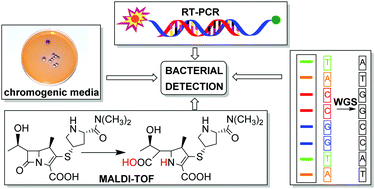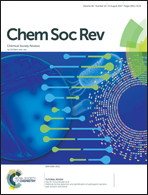Methods for the detection and identification of pathogenic bacteria: past, present, and future
Abstract
In order to retard the rate of development of antibacterial resistance, the causative agent must be identified as rapidly as possible, so that directed patient treatment and/or contact precautions can be initiated. This review highlights the challenges associated with the detection and identification of pathogenic bacteria, by providing an introduction to the techniques currently used, as well as newer techniques that are in development. Focusing on the chemical basis for these techniques, the review also provides a comparison of their advantages and disadvantages.

- This article is part of the themed collections: Probes for in vitro and in vivo fluorescence imaging and Primer


 Please wait while we load your content...
Please wait while we load your content...